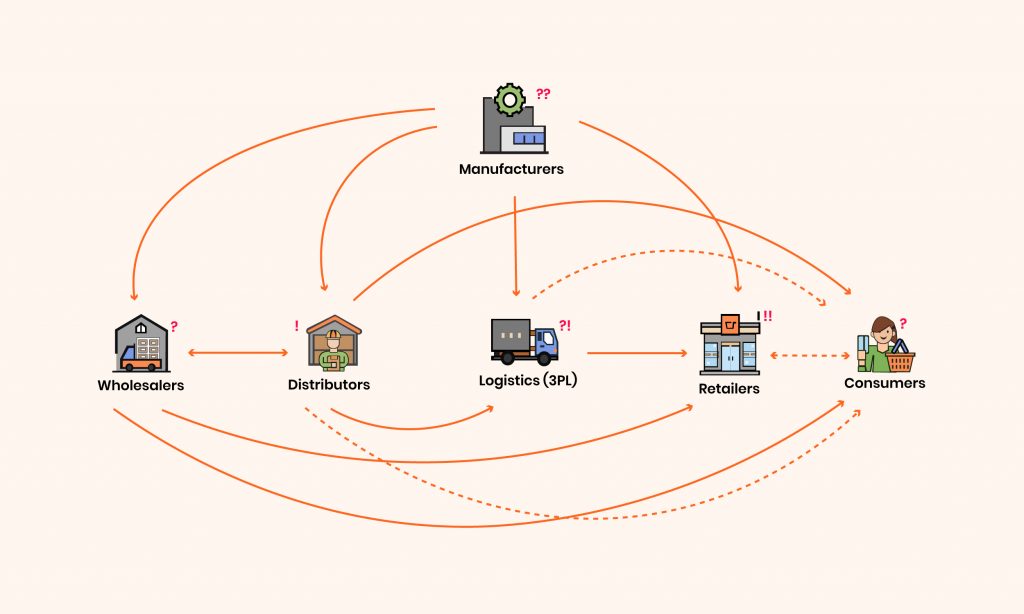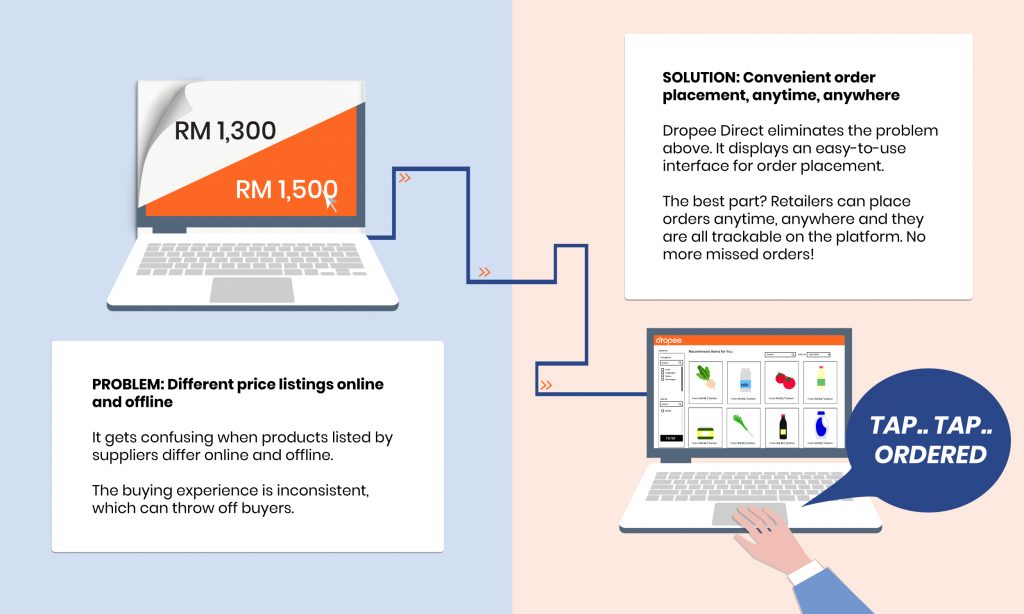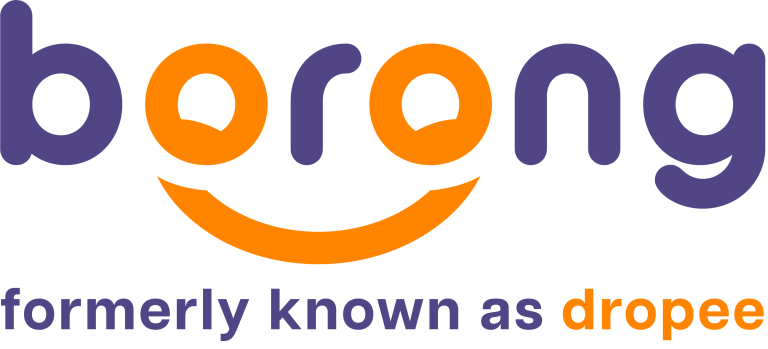The industry faced heavy disruptions when Covid-19 hit the globe, forcing businesses to redefine the importance of supply chain management.
From Clicks to Customers? Myths on Moving Online Read the Article >>
From shortages of critical goods to changes in consumer demand, the global pandemic has revealed weaknesses in the supply chain.
It doesn’t help that the ecosystem is already heavily fragmented.

The supply chain model isn’t a streamlined, circular process. There are multiple crossovers, which means communication isn’t linear.
If you’re a wholesaler who sells to everyday consumers and to other retail shops, and you don’t have a centralised system, there will be limited visibility of the supply chain.
- How do you know which products are selling well and why?
- How do you know how many products to produce and store across which locations and for which SKUs?
- If you want to launch a new brand line, what should they be?
In an evolving industry, fragmentation will easily cause more gaps.
With unclear or inconsistent customer profiles, for example, suppliers are then unsure of what products to upsell to each customer segment. As for the distributors, it’s tough to meet increasing pressure to provide faster fulfilment to retailers without incurring higher costs.
With a pandemic still looming in a fragmented ecosystem, how should businesses make supply chains more agile?
Strengthening the Supply Chain with Technology
Covid-19 has spearheaded the urgent need to adopt digital. For years, it’s been overlooked across industries, as businesses held on to traditional beliefs.
In this article, we’ve broken down the common myths on moving online – and why they’re not true.

McKinsey reported that 85% of supply chain leaders struggled with insufficient digital technologies in the supply chain. Manual inefficiencies were a common denominator – a weakness that slowed down recovery and response time.
Now, businesses must embrace technology and relook into the importance of supply chain management. In a highly fragmented and increasingly saturated market, the traditional way of doing things is not enough. To increase resilience, efficiency and speed cannot be compromised.
This brings us to the next section: How?
Use Cases: How Will Technology Help?
So far, we’ve stressed the importance of adopting technology. But how exactly will it help?
Dropee has studied the supply chain ecosystem for years, and we’ve identified the solutions to the common problems businesses face on a daily basis. Which is why we built Dropee Direct, our B2B eCommerce Platform for both buyers and sellers.
Dropee Allows Suppliers to Create Their Own eCommerce Platform
With Dropee Direct, you can create your own eCommerce platform, with total control of the buying and selling experience.


Dropee Empowers Retailers to Purchase the Right Products from the Right Suppliers
Dropee connects buyers to the best suppliers with the best prices.

The Importance of Supply Chain Management: The Right Technology
Embracing technology in supply chain management doesn’t just improve processes and speed, but it also ensures you stay ahead of the competition.

In an already fragmented B2B ecosystem and a pandemic that still looms ahead, adopting digital is not just an option – it’s a necessity.
For businesses across Malaysia, Dropee is an e-commerce solutions provider that seeks to support our local B2B entities by providing them with a platform to help them streamline and manage their customers and inventories with efficiency and ease. We also help to connect businesses with one another via an online marketplace where they can reach out to more people in a fuss-free space.
To learn more about what we do, reach out to us for a free consultation with our team and get a headstart in digitising your business today!


